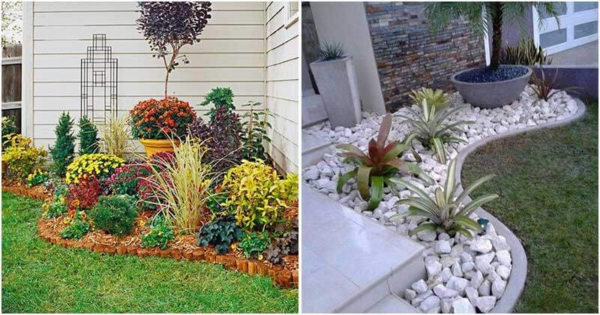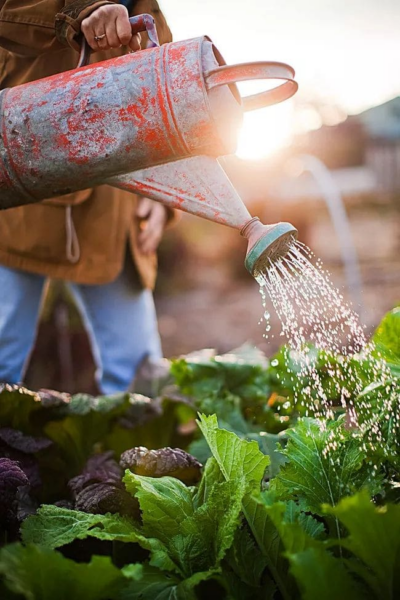Photographic Opportunities in Texas’s Deserts and Plains: A Comprehensive Guide
Texas, the Lone Star State, is a land of extraordinary contrasts and immense beauty. Among its diverse ecosystems, the deserts and plains stand out as unparalleled destinations for photography. From dramatic landscapes to unique wildlife, these regions provide endless inspiration for photographers of all skill levels. Whether you’re capturing the golden hues of a desert sunset, the rugged cliffs of a canyon, or the quiet elegance of native flora, the photographic opportunities in Texas’s deserts and plains are truly limitless.
This guide delves deep into the best locations, techniques, and times to photograph the wonders of Texas’s deserts and plains. Whether you’re an aspiring photographer or a seasoned professional, you’ll find valuable insights to make the most of your photographic journey.
Why Texas’s Deserts and Plains Are Perfect for Photography

The deserts and plains of Texas offer a dynamic blend of features that make them ideal for capturing incredible photos:
- Diverse Landscapes: Spanning from the rolling grasslands of the Great Plains to the arid expanses of the Chihuahuan Desert, these regions provide stunning backdrops.
- Unique Wildlife: Iconic animals like the pronghorn antelope, Texas horned lizard, and greater roadrunner add life and motion to your frames.
- Unmatched Light Quality: The golden light of sunrise and sunset, combined with the clarity of desert air, creates perfect conditions for vibrant, high-contrast images.
- Astrophotography: Texas’s wide-open skies and remote areas offer some of the best stargazing and night photography opportunities in the United States.
Best Photographic Locations in Texas’s Deserts and Plains

1. Big Bend National Park
Located in West Texas, Big Bend National Park is a haven for landscape photographers. Its diverse terrain includes mountains, deserts, and river valleys.
- Must-Capture Views:
- Sunrise over the Chisos Mountains.
- The winding path of the Rio Grande River as it carves through rugged canyons.
- The expansive desert floor dotted with cacti.
- Photography Tips:
- Use a polarizing filter to reduce glare and enhance the blue skies.
- For nighttime shots, visit during a new moon to capture the Milky Way in all its glory.
2. Palo Duro Canyon State Park
Known as the “Grand Canyon of Texas,” Palo Duro Canyon is a breathtaking location with vibrant red rock formations and steep cliffs.
- Must-Capture Views:
- The Lighthouse Rock, a towering sandstone formation.
- The interplay of sunlight and shadow on canyon walls during golden hour.
- The sweeping vistas of grasslands and cliffs from the canyon rim.
- Photography Tips:
- Experiment with aerial photography (using a drone where permitted) to capture the canyon’s scale.
- Visit after rainfall for a chance to photograph vibrant greenery against the red rocks.
3. Guadalupe Mountains National Park
This national park features some of Texas’s most striking mountain ranges, along with sand dunes and lush canyons.
- Must-Capture Views:
- El Capitan, a sheer cliff face and one of the park’s most iconic features.
- McKittrick Canyon, especially in the fall when the foliage turns golden and crimson.
- The ethereal beauty of gypsum sand dunes at Salt Basin.
- Photography Tips:
- Capture early morning light for dramatic shadows and textures on the mountains.
- Use a tripod for long-exposure shots of flowing streams in the canyon.
4. Caprock Canyons State Park
This lesser-known gem is home to a bison herd and striking red cliffs that create a photographer’s paradise.
- Must-Capture Views:
- The contrast of green grasslands against the red rock cliffs.
- Bison grazing in their natural habitat.
- Sunset panoramas from the Haynes Ridge Overlook Trail.
- Photography Tips:
- Use a telephoto lens to capture close-up shots of bison without disturbing them.
- Visit during sunrise or sunset to take advantage of soft, golden light.
5. The Chihuahuan Desert
Spanning western Texas, the Chihuahuan Desert is one of the most biologically diverse deserts in the world.
- Must-Capture Views:
- Close-ups of desert plants like prickly pear cacti and yucca blooms.
- The vast desert floor stretching to the horizon under a clear blue sky.
- Wildlife such as the Texas horned lizard and scaled quail.
- Photography Tips:
- Use macro photography to highlight the intricate details of cacti and flowers.
- Capture desert wildlife during early morning or late afternoon when animals are most active.
Unique Photographic Subjects

1. Wildlife
- Pronghorn Antelope: Often found in the plains, their speed and elegance make for dynamic wildlife shots.
- Greater Roadrunner: A favorite subject due to its quirky movements and desert backdrop.
- Coyotes and Foxes: Photograph these elusive creatures during twilight for dramatic lighting.
2. Flora
- Blooming Cacti: Vibrant spring flowers against the muted tones of the desert create stunning contrasts.
- Mesquite Trees: Their twisted branches add texture and character to landscape photos.
3. Night Skies
- Astrophotography: Dark-sky areas like Big Bend offer unparalleled views of the Milky Way, constellations, and meteor showers.
- Star Trails: Use long-exposure techniques to capture the movement of stars across the night sky.
When to Visit for the Best Photos
- Spring (March to May): Wildflowers bloom, and desert landscapes come alive with vibrant colors.
- Fall (September to November): Cooler temperatures, golden grasses, and active wildlife make this an ideal season.
- Winter (December to February): Crisp air enhances landscape clarity, and the softer light creates a dramatic atmosphere.
- Summer (June to August): While the heat can be intense, summer offers incredible sunsets and opportunities to photograph nocturnal wildlife.
Essential Photography Tips for Texas’s Deserts and Plains
- Plan Your Shots: Use apps like PhotoPills or Google Earth to scout locations and plan compositions based on the time of day and lighting conditions.
- Gear Recommendations:
- A wide-angle lens for landscapes.
- A telephoto lens for wildlife.
- A sturdy tripod for long exposures and astrophotography.
- Protect Your Gear: Desert conditions can be harsh. Use lens hoods and covers to shield your equipment from sand and dust.
- Stay Safe:
- Carry plenty of water and sunscreen.
- Be aware of your surroundings, including wildlife like snakes and insects.
Conclusion: Capture the Timeless Beauty of Texas’s Deserts and Plains
Texas’s deserts and plains are more than just photographic subjects—they are living, breathing testaments to the power and resilience of nature. From the serene grasslands of the Great Plains to the rugged beauty of the Chihuahuan Desert, each frame you capture tells a story of vastness, diversity, and wonder.
Whether you’re an avid wildlife photographer, a lover of dramatic landscapes, or someone enchanted by the night sky, Texas offers endless opportunities to explore your creativity. Every season, every location, and every moment in these regions presents something unique, waiting to be immortalized through your lens.
Q&A: Frequently Asked Questions About Photographing Texas’s Deserts and Plains
Q1: What is the best time of year to photograph Texas’s deserts and plains?
A: The best time depends on what you want to capture:
- Spring (March to May): Ideal for wildflowers, blooming cacti, and vibrant landscapes.
- Fall (September to November): Perfect for capturing warm tones in grasslands and active wildlife.
- Winter (December to February): Great for minimalist desert landscapes and astrophotography due to clear, long nights.
Each season offers unique photographic opportunities, so plan based on your preferences.
Q2: What type of camera gear should I bring?
A: It depends on the type of photography you’re planning:
- For Landscapes: A wide-angle lens and a tripod for steady, sharp shots.
- For Wildlife: A telephoto lens (300mm or longer) to capture animals from a safe distance.
- For Astrophotography: A fast lens (f/2.8 or lower) and a sturdy tripod for long exposures.
Additionally, bring spare batteries and lens cleaning tools to deal with dust and sand in the desert.
Q3: Are there any safety tips for photographing in deserts and plains?
A: Absolutely!
- Stay Hydrated: Always carry plenty of water, especially during summer months.
- Protect Against the Sun: Use sunscreen, wear a wide-brimmed hat, and bring sunglasses.
- Be Aware of Wildlife: Maintain a safe distance from animals like snakes, coyotes, and bison.
- Check the Weather: Sudden storms can occur, especially in summer. Be prepared to seek shelter.
Q4: Can I use a drone for photography in Texas’s deserts and plains?
A: Yes, drones are great for capturing aerial perspectives of wide-open landscapes and dramatic canyons. However, ensure that you:
- Follow FAA regulations and check local drone laws.
- Avoid flying in national parks where drones are prohibited (e.g., Big Bend National Park).
- Respect wildlife by maintaining a safe distance and avoiding loud noise disruptions.
Q5: What makes Texas’s deserts and plains unique for photography compared to other regions?
A: Texas’s deserts and plains stand out because of their:
- Diverse Ecosystems: From the Chihuahuan Desert to the Great Plains, the variety of landscapes is unmatched.
- Iconic Wildlife: Animals like the Texas horned lizard, pronghorn antelope, and greater roadrunner are unique to the region.
- Astrophotography Opportunities: The wide-open skies and remote areas provide some of the clearest views of the Milky Way in the U.S.
Q6: Can I capture great photos with just a smartphone?
A: Absolutely! Modern smartphones have advanced camera features that can produce stunning results:
- Use night mode for astrophotography and low-light landscapes.
- Experiment with panorama mode to capture sweeping vistas.
- Invest in a smartphone tripod and attachable lenses (e.g., wide-angle or macro) for added versatility.
Q7: Where can I find the best spots for astrophotography?
A: Some of the best dark-sky areas in Texas include:
- Big Bend National Park: One of the least light-polluted areas in the U.S.
- Davis Mountains State Park: Known for its excellent stargazing conditions.
- Caprock Canyons State Park: Offers clear skies and stunning starry backdrops for canyon landscapes.
Remember to visit during a new moon for the darkest skies and best star visibility.
Q8: Are there any photography tours or workshops available in Texas?
A: Yes, Texas has several photography tours and workshops, especially in areas like Big Bend and Palo Duro Canyon. These tours often focus on:
- Landscape and wildlife photography techniques.
- Night photography, including astrophotography.
- Local insights into the best shooting locations and times.





















